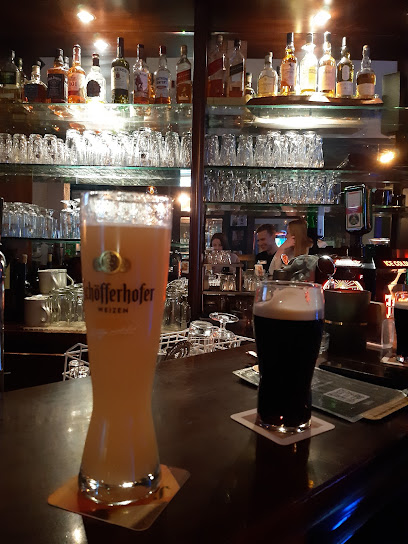
Schloss Rastatt: A Baroque Jewel
Discover Schloss Rastatt, the oldest Baroque residence on the Upper Rhine, where opulent interiors, rich history, and stunning gardens await your exploration and promise an unforgettable experience.
Schloss Rastatt, the oldest Baroque residence in the Upper Rhine region, stands as a testament to the grandeur of the late 17th and early 18th centuries. Built between 1700 and 1707 for Margrave Louis William of Baden-Baden, the palace was designed by Italian architect Domenico Egidio Rossi, drawing inspiration from the Palace of Versailles. Today, visitors can explore the meticulously restored Baroque interiors, including the impressive Ancestral Hall adorned with frescoes and the palace church. The palace also houses the Military History Museum and a memorial site for German freedom movements, offering a multifaceted cultural experience. With its stunning architecture, rich history, and beautiful gardens, Schloss Rastatt provides a captivating glimpse into the opulence and power of the Baroque era, making it a must-see destination for history buffs and architecture enthusiasts alike. The palace gardens are freely accessible during daylight hours, providing a tranquil escape.
A brief summary to Schloss Rastatt
- Herrenstraße 18-20, Rastatt, Rastatt-Innenstadt, 76437, DE
- +497222978385
- Visit website
Local tips
- Take a guided tour to fully appreciate the palace's history and architectural details; tours provide access to areas not open to individual exploration.
- Visit both the Military History Museum and the Memorial Site for German Freedom Movements within the palace to gain a comprehensive understanding of the region's past.
- Explore the palace gardens during daylight hours for a relaxing stroll amidst the formal landscaping and sculptures.
Getting There
-
Public Transport
From Rastatt train station, take bus lines 222, 231, or 239 (Monday to Saturday) to the 'Schlossgalerie' stop. Alternatively, take bus lines 232 or 235 to the 'Schloss' stop. A single bus fare costs approximately €2.50. From either stop, it's a short walk to the palace entrance.
-
Walking
The palace is approximately a 10-15 minute walk from Rastatt train station. Exit the station and follow the signs towards the city center (Zentrum). Continue straight, and you'll see the palace on your left. The walk is straightforward and well-signposted.
-
Taxi/Ride-Share
A taxi or ride-share from Rastatt train station to Schloss Rastatt will cost approximately €8-€12, depending on traffic. The journey takes about 5-10 minutes.
-
Driving
If driving, parking is available near Schloss Rastatt. There are 50 public parking spaces available for a fee. The Schlossgalerie Rastatt also offers parking. Parking fees typically range from €1-€2 per hour.
Discover more about Schloss Rastatt
Iconic landmarks you can’t miss
Schloss Rastatt
0.0 km
Discover Schloss Rastatt, the oldest Baroque residence on the Upper Rhine, a Versailles-inspired palace with opulent staterooms, historical museums, and serene gardens, offering a glimpse into German royalty.
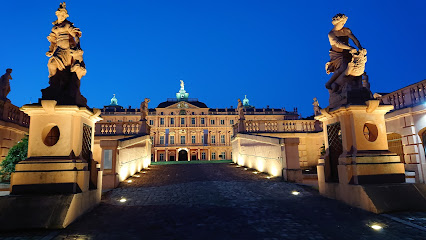
Fünf-Quellenhütte
9.0 km
Discover the serene beauty of the Black Forest at Fünf-Quellenhütte, a tranquil haven for hikers and nature enthusiasts near Baden-Baden, Germany.
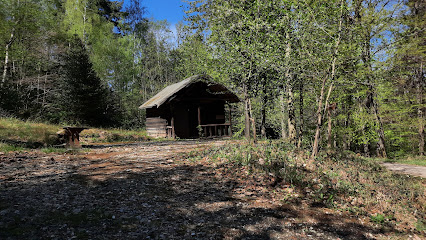
Hohenbaden Castle
9.6 km
Explore the enchanting ruins of Hohenbaden Castle, a historical gem offering breathtaking views and scenic hiking trails in Baden-Baden, Germany.
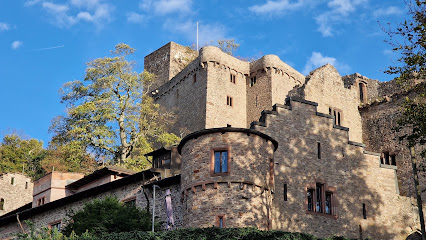
Ritterplatte
9.6 km
Experience panoramic vistas from Ritterplatte, Baden-Baden's historic viewpoint, offering stunning views of the Rhine Valley, Black Forest, and the charming city below, a photographer's dream.
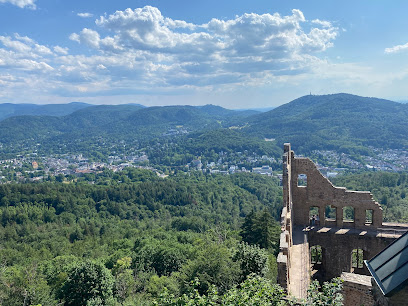
Verfassungsplatz
10.1 km
Discover Verfassungsplatz in Baden-Baden: A historic square and transport hub offering easy access to the town's top attractions, vibrant atmosphere, and a taste of local life.
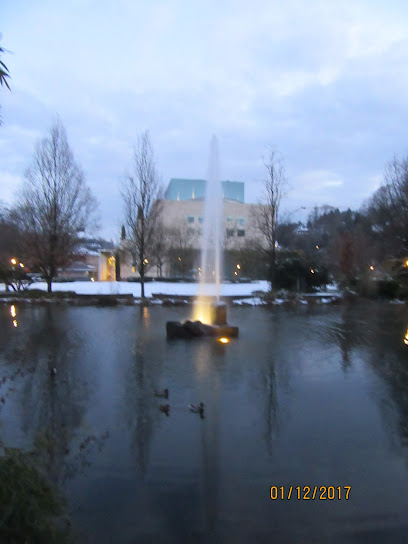
Engelstatue
10.6 km
Discover the Engelstatue in Baden-Baden, a breathtaking historical landmark surrounded by stunning views and rich cultural heritage.
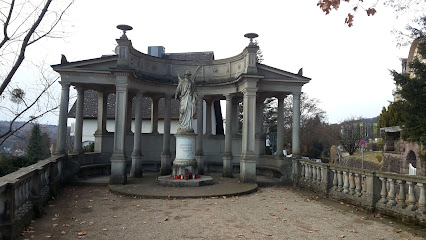
Pulverstein
10.8 km
Discover Pulverstein near Baden-Baden: Hike scenic trails, experience breathtaking Black Forest views, and escape into nature's tranquility for an unforgettable outdoor adventure.
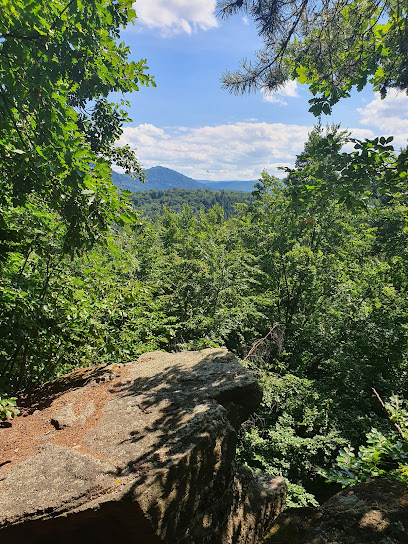
Marktpl. 2
11.0 km
Experience the vibrant culture and history at Marktplatz 2, the heart of Baden-Baden, where stunning architecture meets local charm.
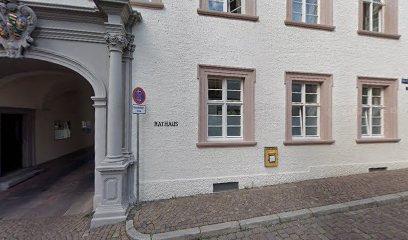
Kaiser Wilhelm Denkmal
11.0 km
Discover the rich history at Kaiser Wilhelm Denkmal in Baden-Baden, a stunning tribute with breathtaking views and serene landscapes.
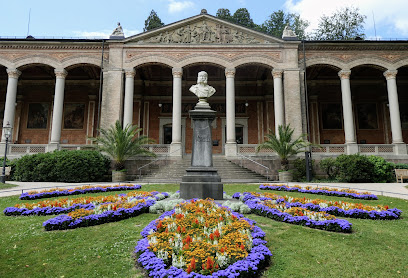
Willy -Brandt-Platz
11.0 km
Discover Baden-Baden's historical charm at Willy-Brandt-Platz, a square where history, architecture, and tranquility converge in the heart of the city, offering a unique glimpse into its past.
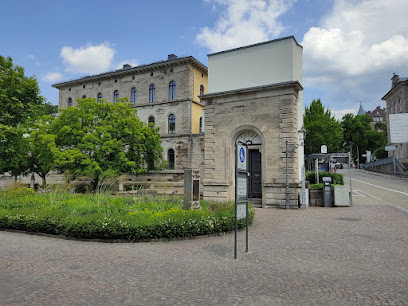
Brunnen am Jesuitenplatz
11.1 km
Discover the serene beauty and historical charm of Brunnen am Jesuitenplatz, a captivating fountain in the heart of Baden-Baden.
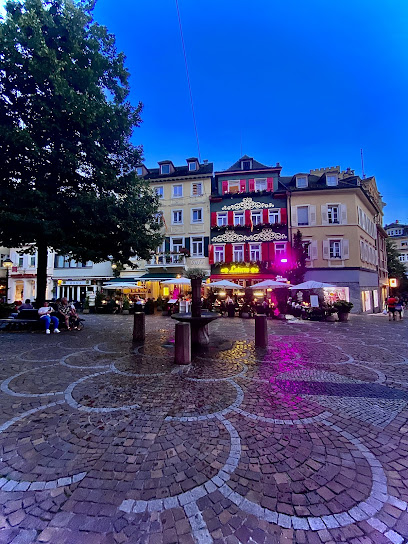
Skulptur Sitzender Braunbär
11.1 km
Discover the charm of Baden-Baden through the iconic Skulptur Sitzender Braunbär, a stunning sculpture symbolizing the town's rich artistic heritage.

Reiherbrunnen
11.1 km
Discover the enchanting Reiherbrunnen in Baden-Baden, a stunning Art Nouveau fountain and a symbol of the city's rich spa heritage, nestled in the heart of the Black Forest.
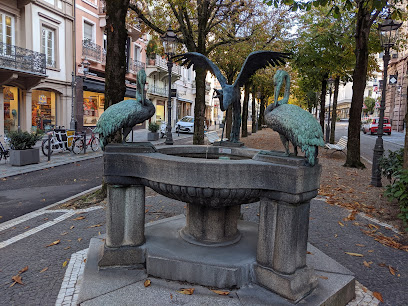
Skulptur Honigbär
11.2 km
Discover the charming Skulptur Honigbär in Baden-Baden, a whimsical landmark on the elegant Sophienstraße, offering a delightful photo opportunity and a touch of playfulness.
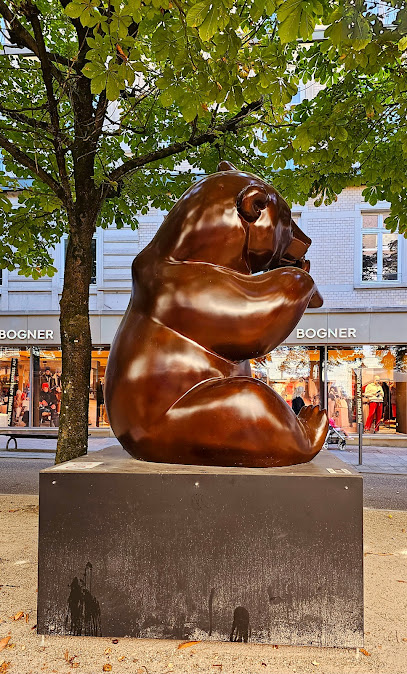
Paradies Cascade
11.3 km
Discover the serene beauty of Paradies Cascade in Baden-Baden: a harmonious blend of nature, art, and history in a tranquil ornamental garden with cascading fountains.
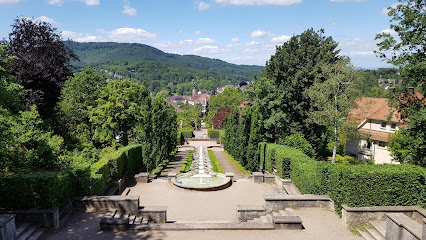
Unmissable attractions to see
Altes Schloss zu Hohenbaden
9.6 km
Explore the majestic Altes Schloss zu Hohenbaden, a historic castle in Baden-Baden offering stunning views and rich cultural heritage.
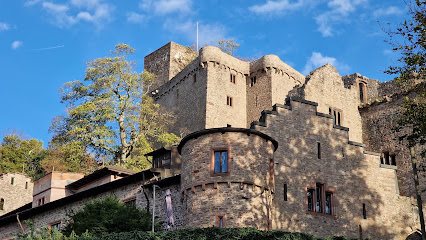
Burg Alt-Eberstein
9.6 km
Experience the captivating beauty and rich history of Burg Alt-Eberstein, a stunning castle with hiking trails in Baden-Baden, Germany.
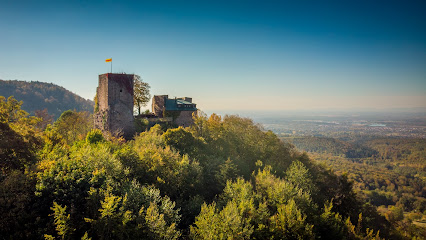
Biergarten Altes Schloss zu Hohenbaden Baden-Baden
9.6 km
Nestled in the hills of Baden-Baden, Biergarten Altes Schloss offers authentic German cuisine and stunning views in a charming beer garden setting.
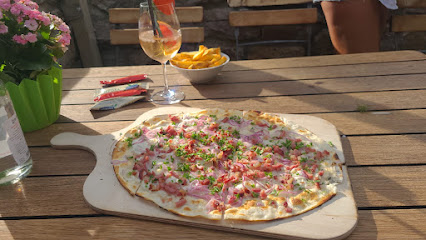
Battertfelsen at Hohenbaden Castle
9.7 km
Discover the breathtaking views and rich history of Battertfelsen at Hohenbaden Castle, a scenic nature preserve in Baden-Baden, Germany.
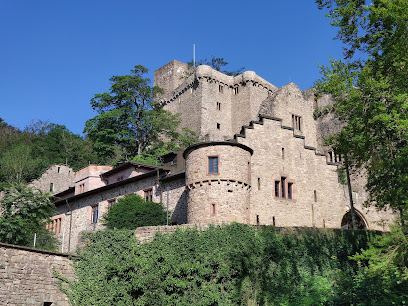
Grüner Stein
9.8 km
Discover Grüner Stein in Baden-Baden: a serene natural retreat offering picturesque landscapes, tranquil trails, and breathtaking views of the Black Forest.
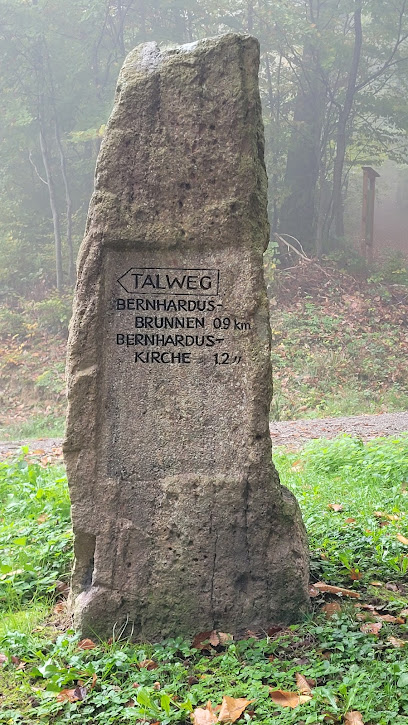
Miniturwelt mit Sima's Café
9.9 km
Explore a captivating miniature world in Baden-Baden with interactive exhibits and a cozy café for a delightful family experience.
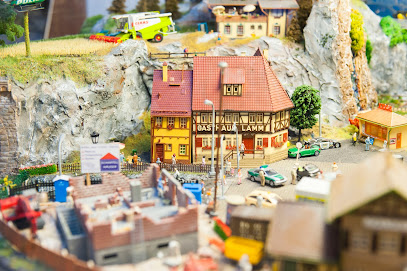
Panoramaweg
9.9 km
Hike Germany's most beautiful trail in Baden-Baden: panoramic views, historic sites, and Black Forest beauty await!
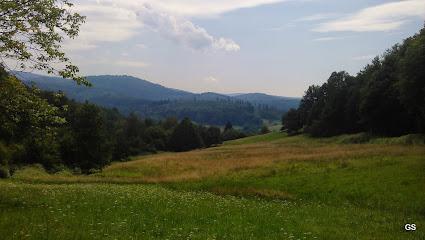
Festspielhaus Baden-Baden
10.4 km
Experience world-class opera, ballet, and concerts in a historic setting at Germany's largest festival hall, the Festspielhaus Baden-Baden.
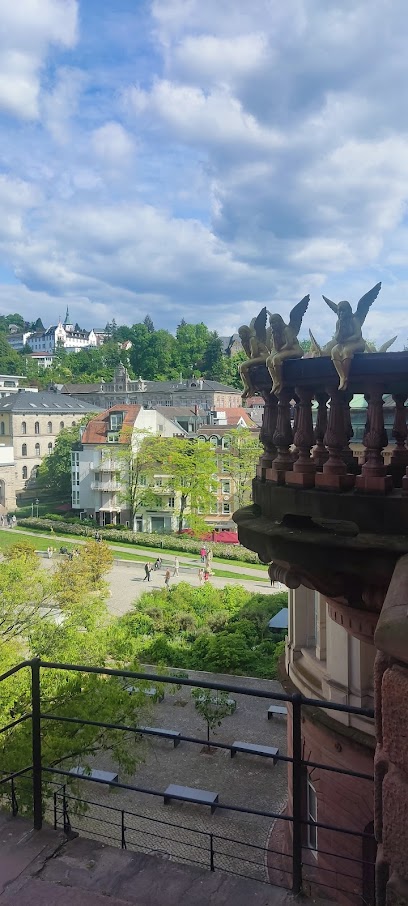
Baden-Baden
10.5 km
Experience Baden-Baden: Where spa culture, elegant architecture, and Black Forest beauty converge for an unforgettable escape.

Stein der Weisheit
10.5 km
Enjoy panoramic views of Baden-Baden's old town, New Castle, and Merkur Mountain from this scenic spot on Hungerberg.
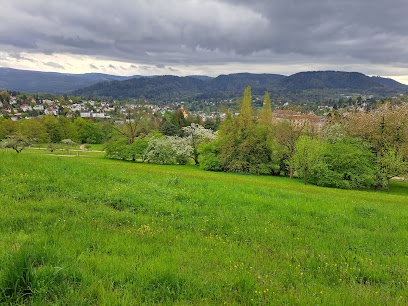
Denkmal Bürgerstein "Point of View"
10.6 km
Reflect on your perspective at the Bürgerstein in Baden-Baden, a unique monument encouraging civic engagement and a closer look at the city.
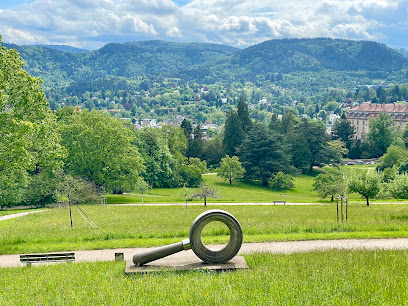
Vista Panoramica Baden -Baden
10.6 km
Explore the breathtaking views at Vista Panoramica Baden-Baden, a hiking area that showcases the stunning beauty of the Black Forest and Baden-Baden's charm.
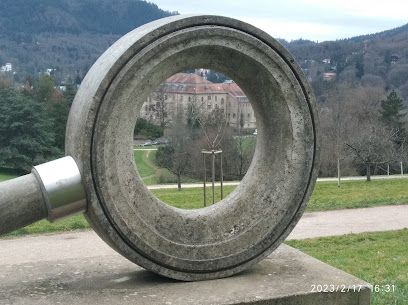
Michaelsteg
10.8 km
Discover Michaelsteg in Baden-Baden: A picturesque bridge offering tranquil views of the Oos River and easy access to city attractions.
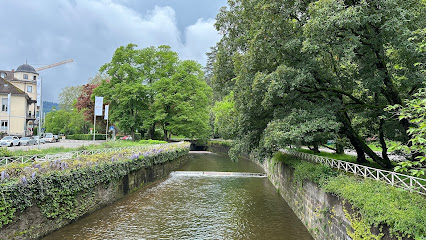
Brunnen an dem neuen Schloss
10.8 km
Discover the serene beauty of Baden-Baden's historic fountain near the New Castle, surrounded by lush gardens and elegant architecture.
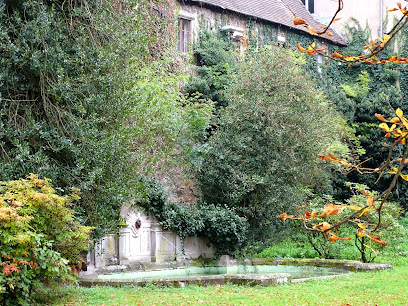
Neues Schloss, Baden-Baden
10.9 km
Explore the majestic Neues Schloss, a Baroque masterpiece in Baden-Baden, surrounded by picturesque gardens and rich history.
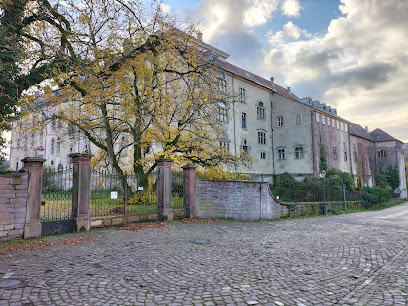
Essential places to dine
Leka.
9.0 km
Experience exquisite dining at Leka in Baden-Baden—where culinary excellence meets cozy ambiance.
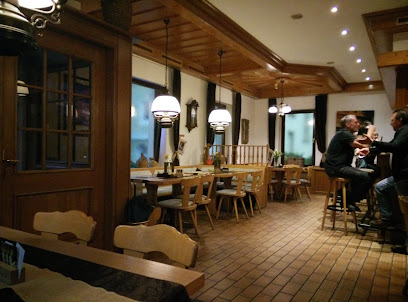
Hemingways
9.5 km
Discover Bavarian flavors and vibrant social vibes at Hemingways Restaurant & Bar in scenic Baden-Baden.
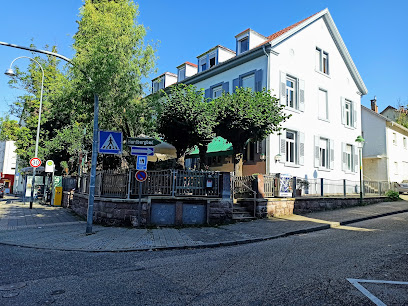
moriki baden-baden
10.2 km
Discover Moriki in Baden-Baden: Where traditional Japanese flavors meet innovative fusion cuisine for an unforgettable dining experience.

Porterhouse Grill
10.7 km
Experience exquisite dining at Porterhouse Grill in Baden-Baden, where premium meats meet exceptional service in a charming atmosphere.
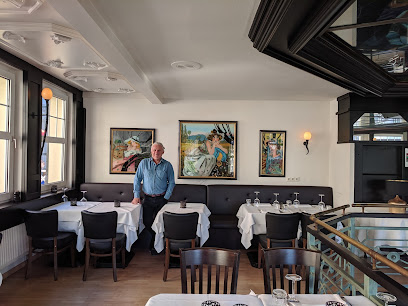
RESTAURANT NIGRUM
10.8 km
Experience culinary excellence at Restaurant Nigrum in Baden-Baden – where fresh ingredients meet innovative cuisine in an inviting atmosphere.

M10 Badisches Cafe & Restaurant
11.0 km
Discover authentic German flavors at M10 Badisches Cafe & Restaurant in beautiful Baden-Baden.
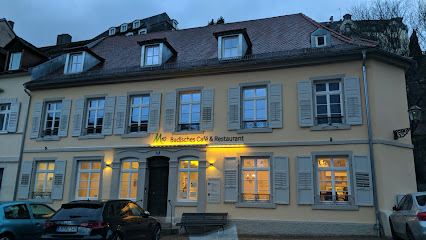
Löwenbräu Baden-Baden
11.1 km
Discover authentic Bavarian cuisine and local brews at Löwenbräu Baden-Baden - A true taste of Germany in every bite.
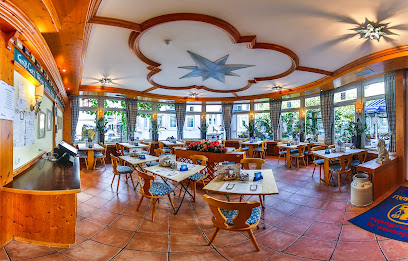
Löwenbräu Keller
11.1 km
Discover authentic Bavarian flavors at Löwenbräu Keller in Baden-Baden - a culinary gem that brings Germany's rich traditions to life.
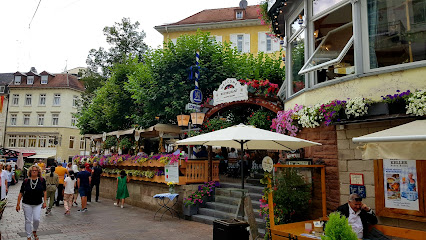
Restaurant Laterne Baden-Baden
11.1 km
Discover exquisite French and German cuisine at Restaurant Laterne in Baden-Baden - where every meal is a celebration of culinary artistry.
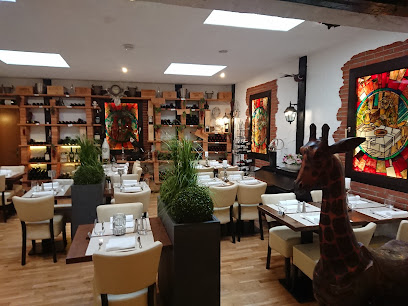
Maltes Hidden Kitchen
11.1 km
Discover Malte's Hidden Kitchen in Baden-Baden: A fine dining experience where every dish tells a story of flavor and creativity.
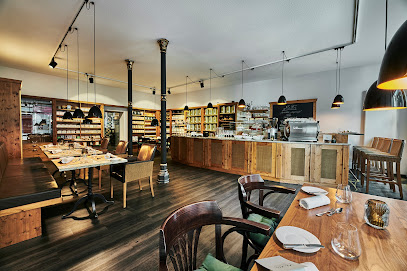
La Casserole
11.1 km
Experience exquisite French cuisine at La Casserole in Baden-Baden, where traditional flavors meet local charm in every dish.
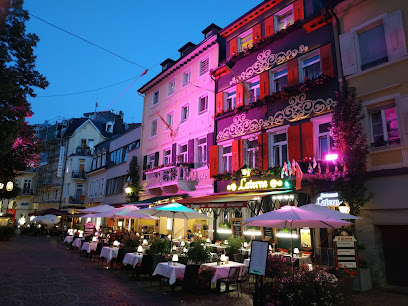
Einhorn
11.1 km
Experience the best of Mediterranean cuisine at Einhorn in Baden-Baden - where flavor meets charm in every dish.
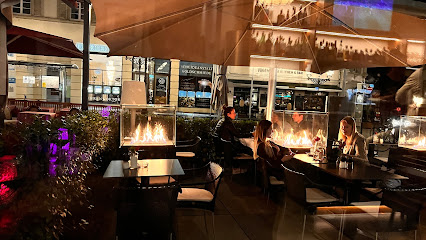
Wallstreet im Hamilton
11.2 km
Experience exquisite dining at Wallstreet im Hamilton, where modern cuisine meets classic elegance in beautiful Baden-Baden.
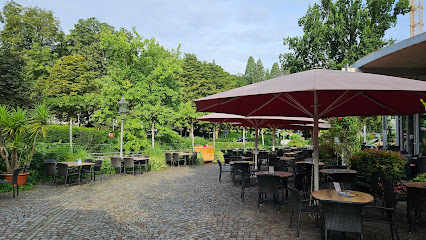
Amadeus Restaurant - Hausbräu
11.2 km
Experience authentic German cuisine at Amadeus Restaurant - Hausbräu in Baden-Baden, where tradition meets modern flair in every dish.
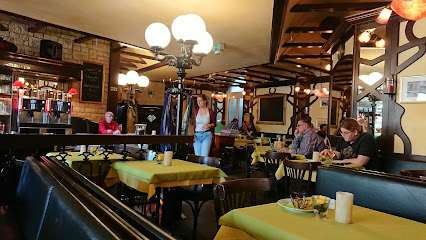
Le Bistro
11.2 km
Experience the best of European cuisine at Le Bistro in Baden-Baden—where flavors meet relaxation in a charming setting.
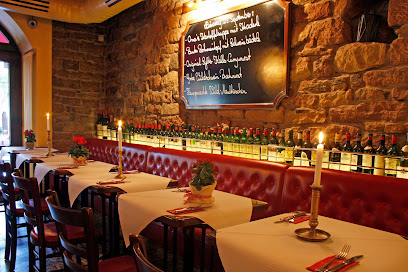
Markets, malls and hidden boutiques
Shopping Cité
8.4 km
Discover a shopping haven at Shopping Cité in Baden-Baden, where you'll find everything from tech to groceries in a vibrant mall atmosphere.

Roppenheim The Style Outlets
9.1 km
Discover unbeatable deals and a vibrant shopping atmosphere at Roppenheim The Style Outlets, your ultimate shopping destination in France.
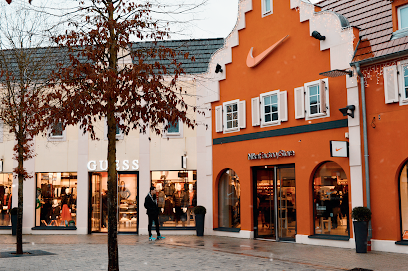
Fanny's Boutique
9.2 km
Explore Fanny's Boutique in Baden-Baden for high-quality, stylish clothing and unique accessories that embody sophistication and elegance.

Strick Liebe
9.3 km
Discover stylish and comfortable baby clothing at Strick Liebe, where fashion meets comfort for your little ones.

L´Adresse Online & Shop
9.3 km
Explore L'Adresse Online & Shop in Baden-Baden for an exquisite selection of women's fashion that combines elegance with contemporary style.

Badendesign GmbH BadenFanShop
9.5 km
Explore unique souvenirs at Badendesign GmbH BadenFanShop, where local culture meets charming craftsmanship in Durmersheim.
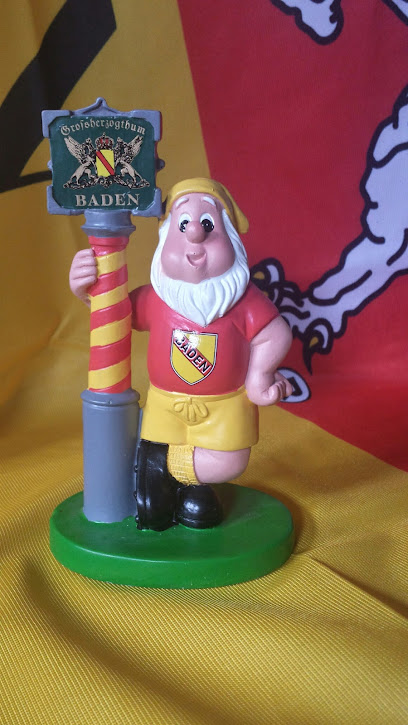
ANNO Dazumal Schönes, Altes & ganz schön Altes
10.3 km
Explore a unique blend of architectural salvage, antiques, and art in Baden-Baden's enchanting gift shop, ANNO Dazumal.

Wunjo Kreativ & Einzigartig
10.7 km
Discover unique handcrafted gifts and sustainable fashion at Wunjo Kreativ & Einzigartig in Baden-Baden - a must-visit for creative souls.
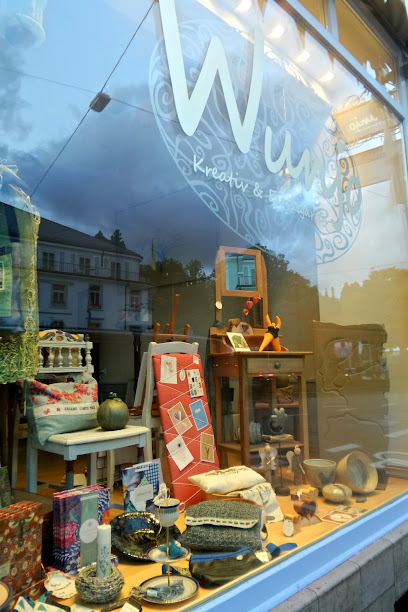
La Boutique
10.8 km
Discover unique fashion at La Boutique in Baden-Baden, where style meets local charm in a delightful shopping experience.

Wagener Shopping Baden-Baden
10.8 km
Discover a unique shopping experience at Wagener Shopping in Baden-Baden, where fashion meets local culture and culinary delights await.
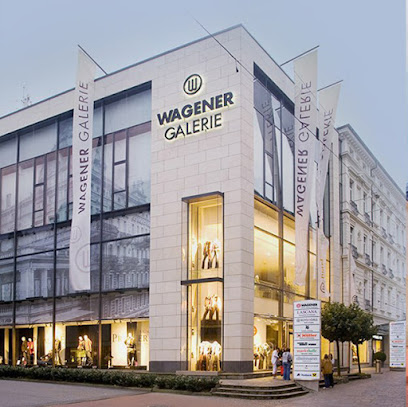
by Lola Concept Store
10.9 km
Explore a curated collection of trendy clothing and unique accessories at by Lola Concept Store in Baden-Baden's vibrant shopping scene.
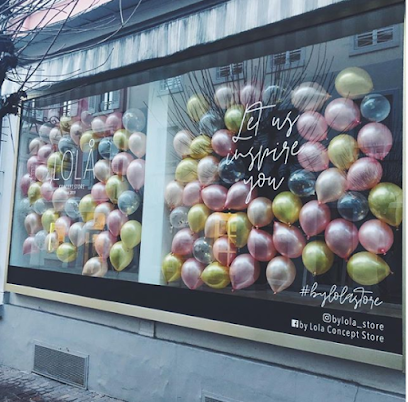
Geschenke HAR-MONI
10.9 km
Explore the charm of Baden-Baden at Geschenke HAR-MONI, where unique gifts and local treasures await every visitor.
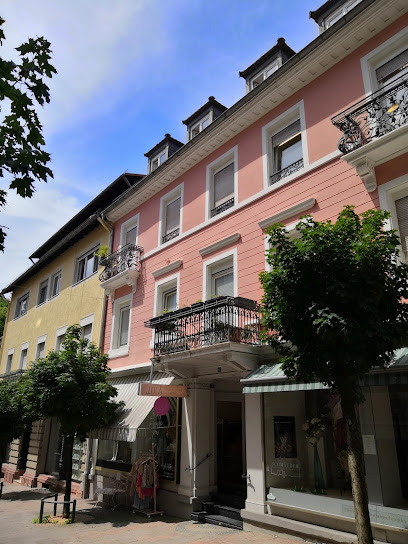
More & More
10.9 km
Discover contemporary fashion at More & More in Baden-Baden, where style meets elegance in an unforgettable shopping experience.
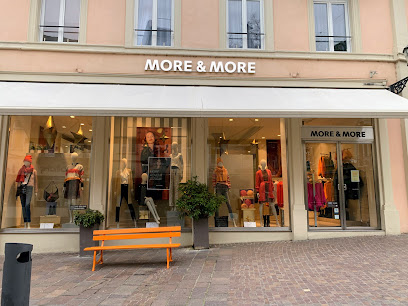
Canvero Accessoires
11.0 km
Explore Canvero Accessoires in Baden-Baden for unique, handcrafted accessories that embody local charm and style.
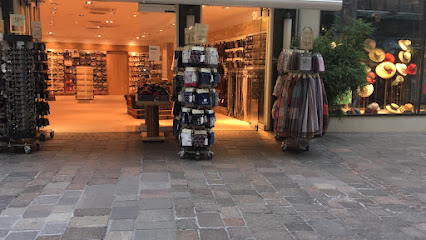
Must Have Baden-Baden
11.0 km
Explore Must Have Baden-Baden for trendy clothing, stylish handbags, and chic accessories in the heart of Baden-Baden's fashion scene.
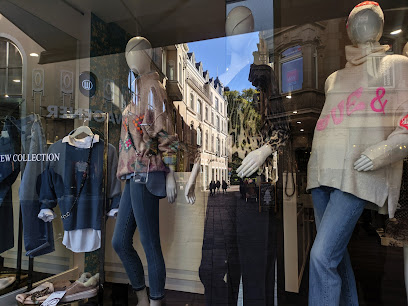
Essential bars & hidden hideouts
Black Pearl Shisha & Cocktail Lounge
0.4 km
Discover the vibrant Black Pearl Shisha & Cocktail Lounge in Rastatt, where exotic cocktails and shisha create the perfect nightlife experience.
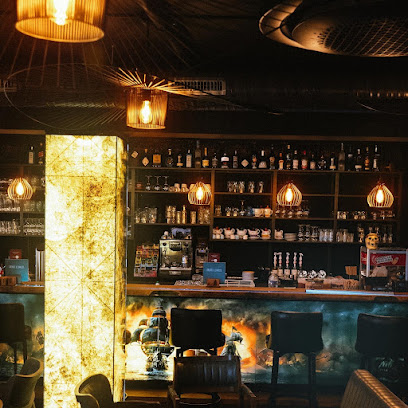
Roomers Rooftop Bar
10.2 km
Discover breathtaking views and exquisite cocktails at Roomers Rooftop Bar in Baden-Baden, a must-visit for every traveler.
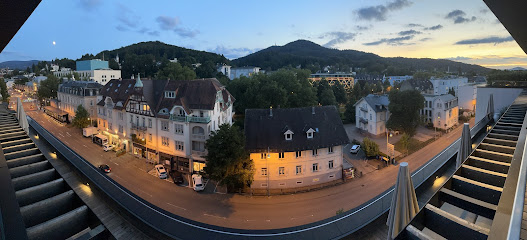
Mardi Events - DE
10.4 km
Experience the vibrant cocktail culture at Mardi Events, Baden-Baden's top cocktail bar offering innovative drinks and a welcoming atmosphere.
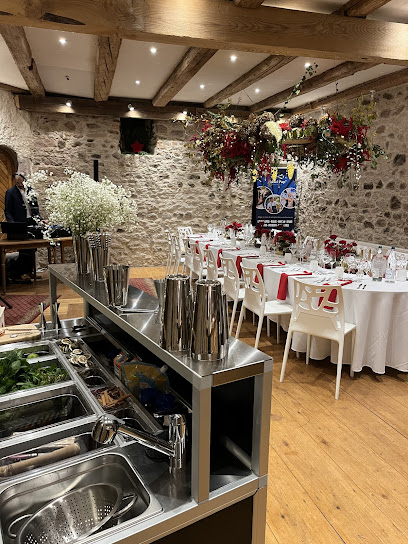
Mosquito Strandbar
10.4 km
Discover the Mosquito Strandbar: a lively lakeside bar and restaurant offering delicious food, refreshing drinks, and exciting events in Hügelsheim.
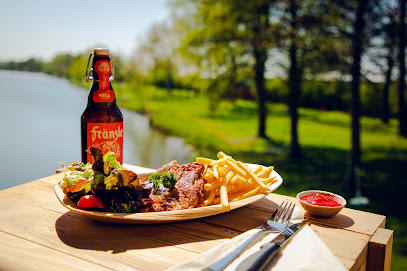
GREYS Bar
10.6 km
Discover the lively GREYS Bar in Baden-Baden, a cocktail bar and Irish pub offering handcrafted drinks and a vibrant atmosphere for all.
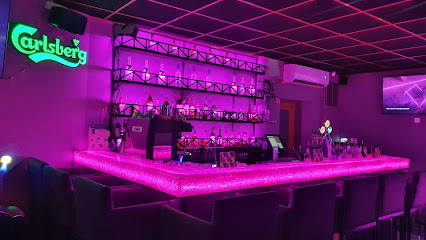
Max’s Bar
10.8 km
Experience the vibrant nightlife of Baden-Baden at Max's Bar, where cocktails flow and the music never stops.

Café Bar Trinkhalle
11.1 km
Discover the charm of Café Bar Trinkhalle in Baden-Baden, where café culture meets bar ambiance for a perfect relaxation spot during your travels.
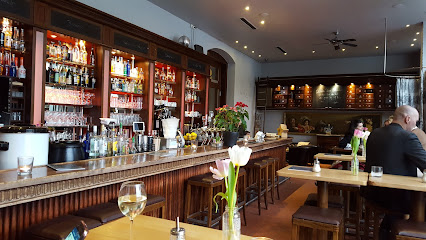
Leo's | Restaurant, Café & Wine-Bar
11.1 km
Experience the perfect blend of Western cuisine, bistro charm, and exquisite cocktails at Leo's in Baden-Baden.
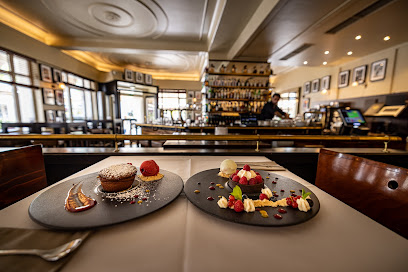
Sun-si-Bar
11.1 km
Discover the lively Sun-si-Bar in Baden-Baden, offering a vibrant atmosphere, diverse drinks, and unforgettable nightlife experiences.
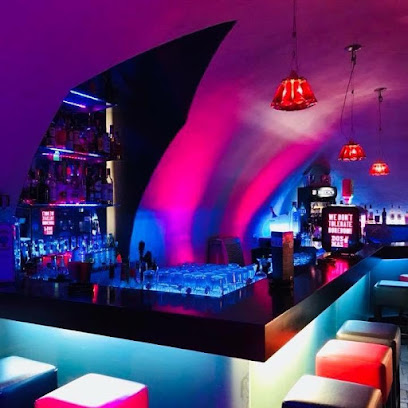
Equipage - dance, music and cocktail bar in Baden-Baden
11.2 km
Discover the vibrant nightlife at Equipage, a premier dance and cocktail bar in Baden-Baden, offering live music and a lively atmosphere.
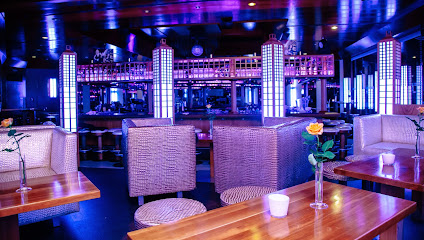
Bernstein Club im Casino Baden-Baden
11.2 km
Discover the lively Bernstein Club in Baden-Baden, where stylish bar vibes meet an electrifying night club atmosphere for an unforgettable experience.
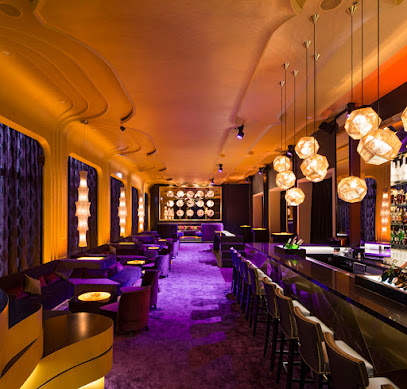
Armando's Bar in der Kreuzpassage
11.3 km
Discover the vibrant nightlife of Baden-Baden at Armando's Bar, where exquisite cocktails meet an energetic atmosphere, perfect for every night out.
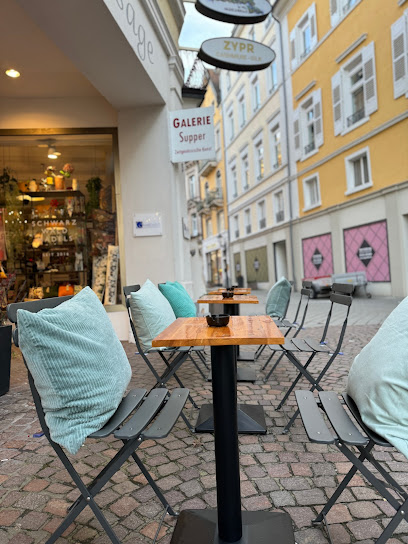
CaféBar Bruder&Schwester
11.4 km
Discover CaféBar Bruder&Schwester in Baden-Baden - a lively bar offering delightful drinks and a cozy atmosphere perfect for relaxation.
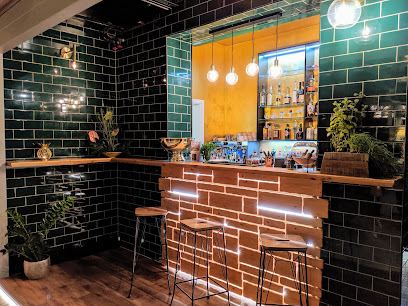
Living Room
11.4 km
Experience the cozy charm of Living Room Bar in Baden-Baden, where delightful drinks and a warm ambiance await every visitor.
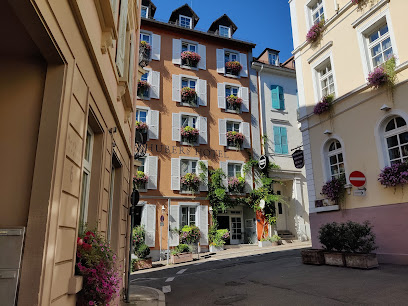
Griffin's Pub
11.5 km
Discover the vibrant atmosphere of Griffin's Pub, an authentic Irish bar in Baden-Baden offering great drinks and unforgettable experiences.
